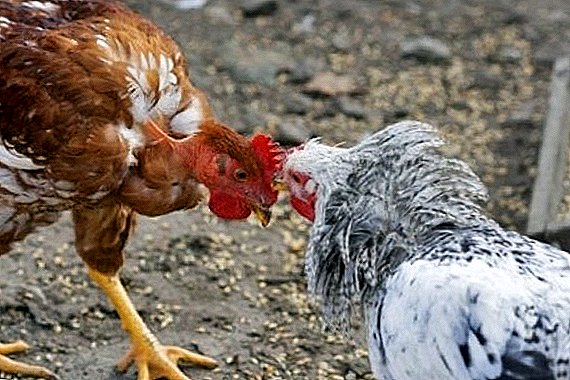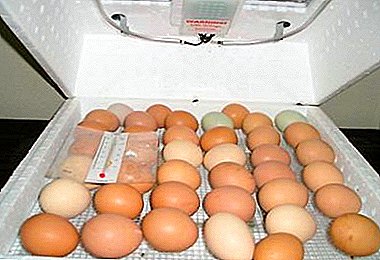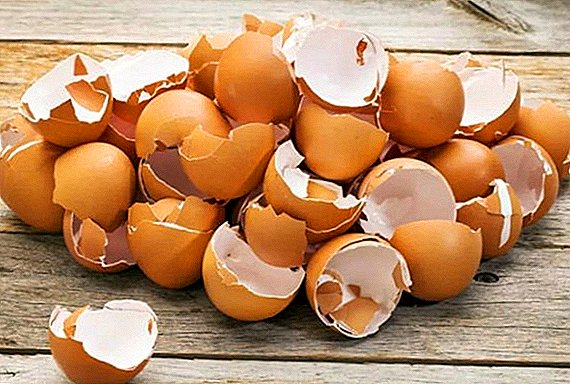 It is known that chickens carry white or brown eggs. But not many people know that chicken shells can also be blue and olive. All these colors are quite natural, and there are a large number of factors due to which they appear.
It is known that chickens carry white or brown eggs. But not many people know that chicken shells can also be blue and olive. All these colors are quite natural, and there are a large number of factors due to which they appear.
Why do chicken eggs differ in color?
All egg shells are made of the same material, staining occurs with the help of chemicals that either cover the shell or penetrate it. Pigment is largely determined by genetics, so the chicken breed is the main determining factor.  The brown color is the pigment that is superimposed on the shell, it is called protoporphyrin IX, it is similar to the hemoglobin in your blood. But hemoglobin has iron in your blood, so you get a red color, and there is no iron on the shell, so you get a brown color.
The brown color is the pigment that is superimposed on the shell, it is called protoporphyrin IX, it is similar to the hemoglobin in your blood. But hemoglobin has iron in your blood, so you get a red color, and there is no iron on the shell, so you get a brown color.
Protoporphyrin is superimposed in the form of a layer over calcium carbonate; therefore, the brown color of the shell is external, inside it remains white.
You will be interested to know how useful a chicken egg is for the body, as well as eggs of guinea fowl, quail, turkey, indouki, goose egg, duck, ostrich.
The situation is a little different with blue. Bilirubin produced by the spleen is responsible for the appearance of such a coloration. He begins his influence even at the moment of laying the egg, so it has a blue tint both outside and inside.
There are several types of chickens bearing such testicles. This is due to the fact that once their ancestors had been infected by a virus that inserts its genome into the genes of chickens. As a result, increased production of bilirubin begins, which settles on the shell. For humans, this has no consequences. 
What determines the color and shade of chicken eggshell
There are many factors that affect the color of the shell.
Breed
Most often, white chickens lay white, and brown or reddish chickens - brown eggs. But there are several breeds of chickens that lay green or blue due to their genetic properties.
These include olive eggers, araucana, legbar and ameraukana. Pure white, without a beige shade, are Russian white, minor, Leningrad gray hens.
Did you know? Chickens that carry olive and blue eggs are called Easter eggs.
The rest of the breeds carry eggs with a shell from light beige to dark brown. 
Environmental impact
The color of the shell can be affected by such environmental factors:
- Stress. If the chicken has been subjected to stress, the amount of porphine secreted is significantly reduced and the color of the shell becomes lighter. This is a temporary occurrence.
- Air temperature and drinking water. It is proved that when the ambient temperature is above 25 ° C, chickens carry lighter eggs. Also occurs if the chickens are given water at a temperature of 50 ° C.
- Lighting in the hen house. The production of pigment depends on the length of the day. The longer it is, the brighter the egg scoop.
Important! Hens begin to lay pale eggs when too tight. It is necessary to adhere to the norm of 5 goals per 1 m².
Drug use
For the treatment of chickens often use drugs containing sulfonamides or nicarbazine. These substances can reduce the intensity of the color of the shell. To give a more intense brown shade, Bacillus subtilis spores are applied. They are added directly to the feed.  Or adrenaline can reduce or completely depigment.
Or adrenaline can reduce or completely depigment.
Important! When treating chickens with various preparations, one should strictly follow the instructions for use. In some cases, it is necessary at the time of treatment to abandon the use of eggs.
Duration of a chicken in the sun
It has been established that with a long stay of chickens in the sun, their eggshell becomes lighter in color. The same phenomenon occurs at high temperature in the chicken coop.
Did you know? Studies in Australia have shown that providing water with a temperature of 5 ° C in very hot weather allowed chickens to lay eggs, which kept their tëMany color of the shell.
If the hens are free-range, they should be provided with a cool drink and the feeders placed in a shady place. 
Physiological processes
The first chicken egg is always much darker than the next ones. This is due to the fact that it is much longer in the oviduct. The older the chicken, the brighter the shell. Sometimes a whitish bloom appears on the shell.
This is due to the fact that the egg is retained in the uterus, because of which an additional layer of calcium is deposited on it.
Did you know? There is a rule: chickens with white "earrings" lay white eggs, and chickens with red ones - brown.
Does feeding ration affect egg shell color?
Balanced nutrition is very important for the production of high-quality eggs. The chicken should receive a diet that provides the full range of nutrients, vitamins and minerals. Since the egg shell is 90% calcium, its absence in the diet will adversely affect the appearance.  Uneven pigmentation may appear or, in extreme cases, there will be a complete absence of the shell. If in the diet of chickens too much calcium in the shell can have a sandy texture.
Uneven pigmentation may appear or, in extreme cases, there will be a complete absence of the shell. If in the diet of chickens too much calcium in the shell can have a sandy texture.
White and brown: is there a difference
In addition to appearance, there is no difference between brown and white. As we found out earlier, the shell is initially white. Having stayed in the oviduct up to 26 hours, it is stained with secreted pigments.
It will also be useful for you to find out how chicken eggs differ and how to choose, whether it is possible to freeze chicken eggs, what are the quality requirements for chicken eggs, whether it is possible to drink and eat raw eggs, how to determine the freshness of eggs at home.
Nutritional and palatability are more dependent on the diet of the layer than on the color of the shell.
What affects the color of the yolk
The color of the hen has a particular effect on the color of the yolk. Grass and other plants, such as clover, corn and alfalfa, are known to enhance the yellow color of the yolk. 
Pigments
Such pigments as protoporphyrin IX and coprotoporphyrin III are responsible for the color of the shell, and they are also responsible for the shade of the yolk. When using feeds with these pigments, the maximum yellow color can be achieved not earlier than the 10th day.
Chemical substances
Since eggs with a richer yolk shade are considered healthier, chicken farms often add chemical pigments to feed. For a person, no such harm is borne.
What determines the size of chicken eggs
The size, as well as the color, is primarily influenced by:
- Breed. The larger the layer in size, the larger it will carry eggs.
- Age of chicken. Young chickens carry smaller testicles, older ones carry larger ones.
- Diet. If the hen doesn’t eat balanced and plenty, the eggs will become smaller.
- Season. In the summer, chickens carry testicles smaller in size than in winter.
 Although there are many factors that in varying degrees affect the color of the shell, it should be understood that the most important is the genetic predisposition. There is also no connection between the color of the shell and the nutritional value.
Although there are many factors that in varying degrees affect the color of the shell, it should be understood that the most important is the genetic predisposition. There is also no connection between the color of the shell and the nutritional value.For the consumer, the color of the eggshell should not play a decisive role in the choice of eggs. It is important for poultry farmers, because for further incubation eggs are selected with typical pigmentation for this breed. This ensures a greater percentage of hatching and health of chicks.
The typical color indicates that the chicken was not subjected to stress, had a balanced diet and was not sick at the time of laying.












